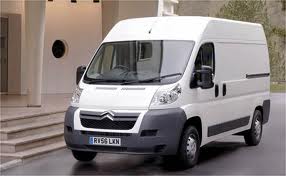Sunday, October 10, 2010
All about Vans : Citroen Relay
Can a driver to really get away with just 100bhp to promote large team van? You could certainly imagine them the standard tea, Sun worship white van man feeling a little watered down by a mere century, horses to get him and gutbuster physique breakfast from A to B. After all, there superminis out there with way more power and less bulk shift.
First, let us remember that historically, 100bhp was a negligible effect for a commercial vehicle, even in the large panel van, is far from a piffling amount of grunt. The old Relay produced only 86bhp in the form of entry-level and great rival, the Vauxhall Movano campaigns choice 82bhp entry-level. It is only in the context of increasingly powerful trucks and passenger cars that have substance in recent years that 100bhp starts to appear even slightly weedy. The question is whether the average light duty van body really needs a camera like 160bhp 3.0-liter flat redistribution or 184bhp 6-cylinder unit that can be specified in the Mercedes Sprinter. We took the road 100bhp entry-level 2.2-liter Citroen Relay to learn.
100bhp powerplant redistribution bears little relation to the nature of the 100bhp diesel was found in small cars just to prove it, let's compare the two. With several big 2.2-liter, lump Relay is much more relaxed state of tune than a typical engine supermini. The 1.6-liter diesel HDi that Citroen will sell you a C3 to produce an impressive 110bhp, but, more importantly, give you 181lb/ft of torque at 1,750 rpm while the engine Relay makes 184lb/ft maximum torque available in all the way from 1.500 rpm by 2.800 rpm. The engine panel van is designed to harness them to a wider section of the rev Range, was given the wisdom to cope with heavy loads, steep inclines and devilish combination of both without drama or frenzied cog crunching on the driver's side.
Out and about in the 3.0-tons short wheelbase, standard roof Relay (the 30 L1H1, for those unfamiliar with the van is less than obvious structure model name), the 100bhp 2.2-liter engine makes a solid first impression. The truck was empty hamper progress, but it pulled strongly and smoothly from low rev Range of like the pancake flat torque curve suggested it would be. The five-speed gearbox fitted to these models (you get six-speed with the most powerful Relays) aids smooth, slipping neatly between several well-spaced ratios and motorway speeds in fifth do not have the machine working too hard. The engine noise is well suppressed; Unfortunately, the roar and creaking road from the loadbay doing much of the repression. Install the optional bulkhead separating the passenger compartment and cargo area and get a more refined van.
Whether the 100bhp engine is powerful enough to be below the very nature of the use of individual actors in mind. The model tested is capable of accommodating 1.155 kg payload, but if your Relay is regularly charged with this kind of weight, 120bhp or 160bhp engines are better equipped to progress up. Similarly, if you frequently travel long distance highway on the agenda, larger engines will be more relaxed companions and the variable power steering that accompanies them makes the Relay less than a handful at these speeds. The standard steering set-up the model we tested was extremely light, combined with excellent turning circle of redistribution to make parking and maneuvering in crowded areas a doddle. At higher speeds, it really inspires confidence when small changes in direction were required to pay.
The Citroen Relay is available in over 70 different bodystyles with gross vehicle weights extending up to 4.0 tonnes, but the biggest van you will find a table with engine 100bhp 2.2-liter engine is mounted on the 3.3-tons medium wheelbase , raised roof. Any body Relay operators choose, you should get one of the most practical and designed loadspaces classroom. The loading height of 560 mm will help to keep chiropractors from your door, and the whole area behind is uniformly shaped with limited drive-arch intrusion.
Quality in the cabin may not be the level of some competitors, notably the Mercedes Sprinter and Volkswagen Crafter, but the overall design is more user friendly with a multitude of storage options available for losing vital piece of paperwork or Ginsters Buffet Bar in. All Relay models feature Trafficmaster satellite navigation and vehicle tracking as standard and this will be a major selling point with traffic information and speed camera warning facilities also included. Be warned, however, that these additional offers only a one month subscription where you get three years use of satellite navigation and positioning technology thrown in.
Mind, the manufacturer has also set-for a complete list of options, so it is quite possible for user choosers or generous bosses to really go to town. All models feature an overspeed warning to help drivers stay within the limits, but there is also an optional speed limitation makes impossible to break. Automatic headlights and wipers are also standard, but there is a reverse camera, climate control, Bluetooth connectivity and all sorts of other technological titbits to consider as options - if you have enough money.
Given free reign, and the company's checkbook, most van drivers will choose as much energy and such manufacturer sees fit to offer a panel van, but it really necessary? On the basis of this test, especially when operating in busy urban areas with a modest payload in tow as many entrepreneurs do not need the relay. The 100bhp HDi powerplant complements the smaller Relays Citroen in some style, keeping costs down with minimal disadvantages in terms of road performance
Subscribe to:
Post Comments (Atom)










No comments:
Post a Comment